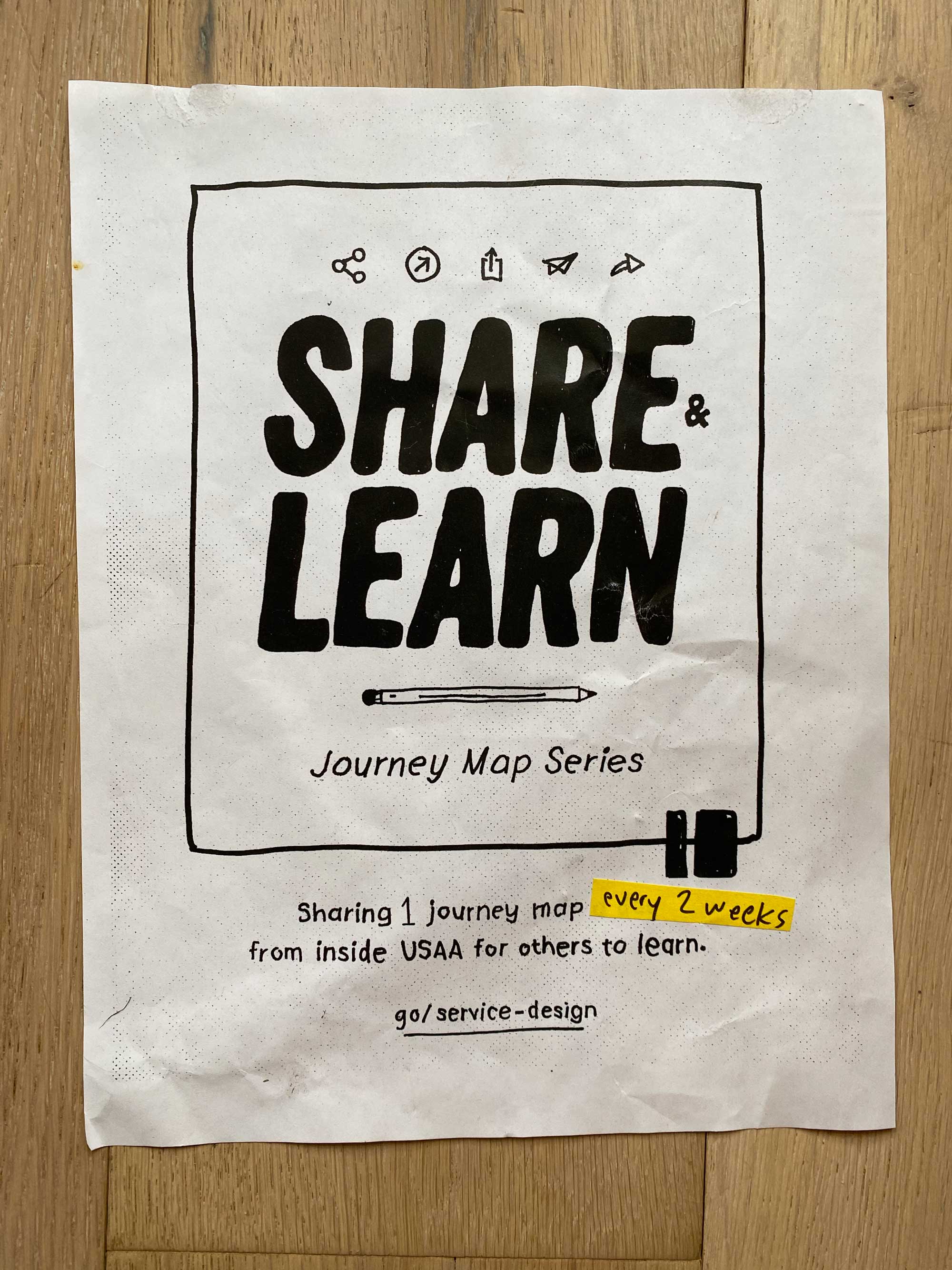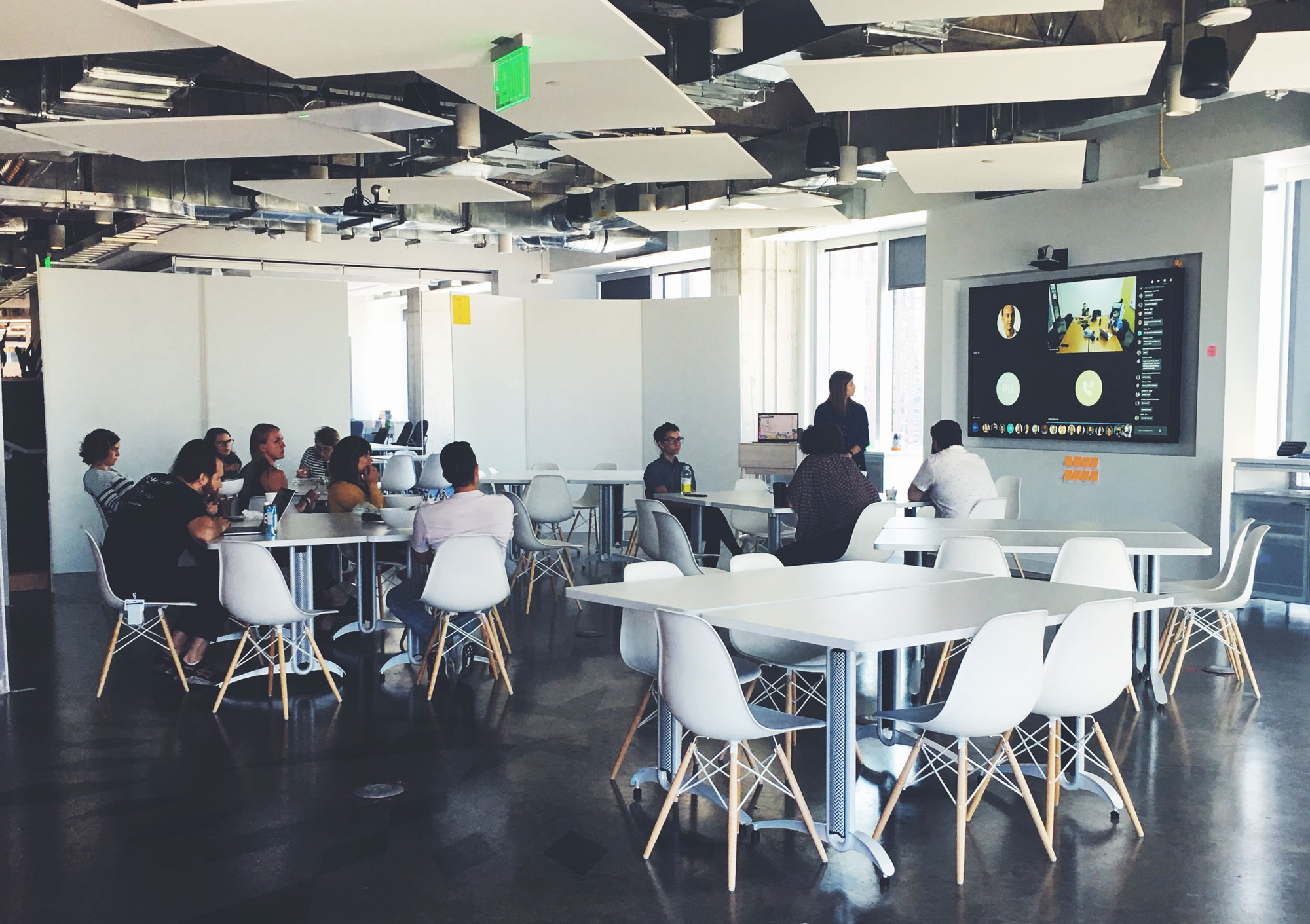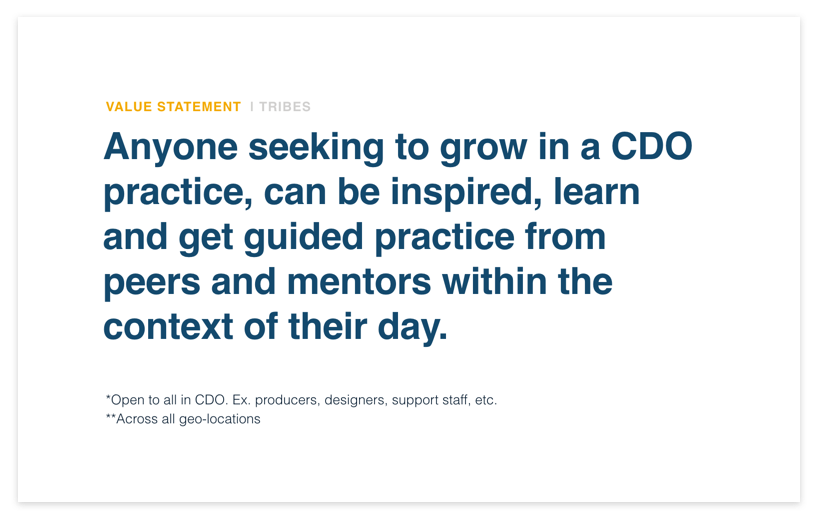USAA Design — Community of Practice
A community of practice (aka Tribes) inside USAA — where designers, product managers and developers, sharing a common practice, interact regularly to do it better.
Tribes is a part of DesignOps at USAA.
WHAT DO TRIBES LOOK LIKE:
![]()
![]()
![]()



WHY TRIBES INSIDE USAA?
In 2017, the Chief Design Office offered a design bootcamp to designers and producers, with the intent of increasing the strategic skillsets that were historically seen in an execution role. After the bootcamp, design leaders asked ... how might we continue our to grow our employees when they go back to their desks?
CHALLENGES THAT EXISTED:
- Designers needed to re-tool with strategic design skills
- De-centralized designers now under a centralized org
- Asychronous working habits not second nature
- Lack of trust across Plano, Austin & San Antonio studios
PROBLEM TO SOLVE:
How might we ... create a ‘1-studio’ approach inside CDO while growing our designers?
MY PROCESS:
Foundational Research ︎ Design Strategy ︎ Pilot & Scale
👨👨👧👦 Foundational Research
We started with by asking questions and assumptions:
- what are communities of practice?
- what is the market standard for CoPs?
- what is the real problem to solve?
Findings:
- Modern designers need to know a lot of skills ... from research to facilitation to agile
- Companies like Atlassian to Google all leverage CoPs to connect practitioners
- We had an opportunity to solve more than just CoPs
Methods:
• Assumption Mapping
• Questionnaire
Documenting risks, uncertainties and unknowns

Visualizing skills of tbe modern designer


Aquired data by sending a survey to 300 CDOers

Pain points from surveys
🎯 Design Strategy
Foundational research was time-boxed to 3-weeks to ensure I reduced the highest risks of the project — leaving room to test and learn at a later time.
With data in our hands, I defined an opportunity that included: the human problems to solve, our hypothesized employee value and how we would release in suqsequent phases.
Methods:
• Value Statements
• Product Vision
• Experience-Based Roadmap


Value Statement first & final draft


Elements of the product vision
MVP Tribes & Roadmap
🖼 Pilot & Scale
To validate our value porp, we prioritized pilots to areas with largest business impact — design research & service design. This enabled us to conduct small experiments while giving other Tribes a model to follow.
As pilots became more frequent, the development of Tribe Reps became a key scaling mechanism that enabled emerging leaders to take on responsibility while rising the level of a skill area across USAA.
PILOT:
![]()
![]()
![]()
SCALE:
![]()
Tribes Reps became a growth and scaling mechanism
![]()
Identifying potential Tribe Reps
![]()
![]()
Tribes are one element of an ecosystem for inspiration and learning inside CDO



SCALE:

Tribes Reps became a growth and scaling mechanism
Identifying potential Tribe Reps


Tribes are one element of an ecosystem for inspiration and learning inside CDO
MY ROLE:
I lead the definition, design and scaling of the Design CoPs.
OUTCOMES:
- 12 communities of practice educating 250+ designers, producers and USAA colleagues
-
Identified 15 emerging leaders inside CDO to take on
leadership positions via Tribe Reps
- Serivce Design & Design Research teams were able to utitlize the platform I created to grow their practices.
KEY LEARNINGS:
- Less imtimidated learning and leading something brand new. I didn’t know anything about communities of practice before I built one.
- Starting design org from scratch is hard! It’s like an awkward 8th grade dance. People are still getting comfortable opening up and trusting one another.
- Leading without influence. I learned how to extend my leadership capabilities while not managing people directly.
- Don’t wait for things to be perfect. Starting a design practice just like any product or service requires you to release in phases.